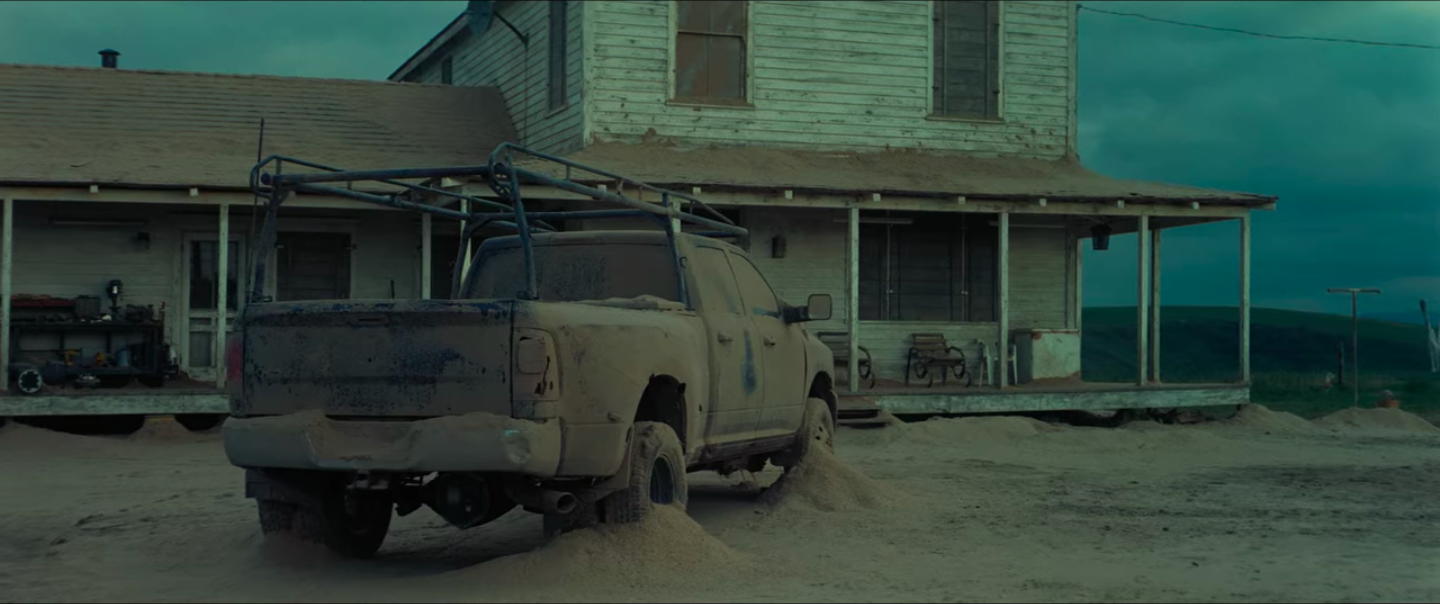
US RURAL IMAGINATIONS
Queen Sugar Season 3 Episode 12 "The Horizon Leans Forward" (dir. Kat Candler, 2018). Harpo Productions, US.
Imagining the Rural in Contemporary American Culture
This subproject focuses on the US, where national identity is grounded in the settler colonial image of white pioneers conquering the wilderness and replacing it with “civilized” rural and urban areas (Nash 2014). While the urban is generally regarded as more sophisticated than the rural, the urban, especially the inner city, is also considered a potentially dangerous “wilderness” (Warner 1995), with the rural seen to harbor more authentic, safer communities (Wilkinson 1991).
In terms of rural politics, small-town rural life is increasingly positioned, especially on the right of the political spectrum, as the place where true American values persist but have also come under threat from urban and especially global influences.
A wide rural-urban divide, for example, manifested in the 2016 presidential elections, with rural voters in so-called “rust belt” states claiming their concerns about globalization’s detrimental effects were only acknowledged and understood by Donald Trump (Badger et al. 2016). As chronicled in J.D. Vance’s bestselling memoir Hillbilly Elegy: A Memoir of a Family and Culture in Crisis (2016), about a rural community in the Appalachians, this perception of the rural as a vanishing and forgotten bastion of true Americanness is intertwined with conservative ideologies of class, gender, sexuality and, notably, race.
The cultural imagination of the rural in the US is historically bound to the (southern) pastoral (Marx 1964) and the frontier (Nash Smith 1950). American literature especially is said to have been “preoccupied with nature and rurality as setting, theme, and value” (Buell 1989). However, there is also a strong tradition of associating the rural, particularly where it blurs into the wilderness, with horror, as exemplified by the 1972 film Deliverance (DeKeseredy et al. 2014). In television, a “rural purge” occurred in the 1970s as networks targeted younger, (sub)urban audiences (Kaiser and Bernstein 2013), but in 2013 a renewed “Rise of Rural TV” was hailed (Wright 2013). The project engages in qualitative analysis of a variety of post-2000s popular imaginations of the rural, such as reality tv shows The Simple Life, Queer Eye, Duck Dynasty, films like Nomadland and Interstellar, tv series like Reservation Dogs and Queen Sugar, and popular fiction from writers such as Louise Erdrich, Jesmyn Ward, and Natalie Baszile.
This subproject examines what aspects of American 21st-century rural life do and do not become visible in popular rural imaginations, and what politics these imaginations support. Taking into account the persisting legacies of settler colonialism, heteropatriarchy, and capitalism, the subproject also engages counter-normative imaginations of the US rural, paying particular attention to imaginations of the queer rural, the black rural, and the indigenous rural. Besides being informed by the overarching theoretical and conceptual framework (chronotope, spectrality, and affect), the project is also in discussion with rural studies research on the US (Brown and Schafft 2011; Danbom 2006; Lichter 2012; Lichter and Brown 2011; Wood 2008) and studies of past and present American rural imaginations in literature, film and television (Fulkerson and Thomas 2016; Buell 1989; Fowler and Helfield 2006; B. Murphy 2013).
References:
Badger, Emily, et al. “The Election Highlighted a Growing Rural-Urban Split.” New York Times, 11 November 2016. Web.
Brown, David L., and Kai A. Schafft. Rural People and Communities in the 21st Century: Resilience and Transformation. Cambridge: Polity, 2011.
Buell, Lawrence. “American Pastoral Ideology Reappraised.” American Literary History 1.1 (1989): 1-29.
Danbom, David B. Born in the Country: A History of Rural America. 2nd Edition. Baltimore: JHU Press, 2006.
DeKeseredy, Walter S., et al. “Mad Men in Bib Overalls: Media’s Horrification and Pornification of Rural Culture.” Critical Criminology 22.2 (2014): 179-197.
Fowler, Catherine, and Gillian Helfield, eds. Representing the Rural: Space, Place and Identity in Films about the Land. Detroit: Wayne State University Press, 2006.
Fulkerson, Gregory M., and Alexander R. Thomas, eds. Reimagining Rural: Urbanormative Portrayals of Rural Life. Lanham: Lexington Books, 2016.
Kaiser, Susan B., and Sara Tatyana Bernstein. “Rural Representations in Fashion and Television: Co-Optation and Cancellation.” Fashion, Style & Popular Culture 1.1 (2013): 97-117.
Lichter, Daniel T. “Immigration and the New Racial Diversity in Rural America.” Rural Sociology 77.1 (2012): 3-35.
Lichter, Daniel T., and David L. Brown. “Rural America in an Urban Society: Changing Spatial and Social Boundaries.” Annual Review of Sociology 37 (2011): 565-592.
Marx, Leo. The Machine in the Garden: Technology and the Pastoral Ideal in America. Oxford: Oxford University Press, 1964.
Murphy, Bernice. The Rural Gothic in American Popular Culture: Backwoods Horror and Terror in the Wilderness. Basingstoke: Palgrave Macmillan, 2013.
Nash, Roderick. Wilderness and the American mind. New Haven: Yale UP, 2014.
O’Sullivan, Shannon E.M. “Playing ‘Redneck’: White Masculinity and Working‐Class Performance on Duck Dynasty.” The Journal of Popular Culture 49.2 (2016): 367-384.
Vance, J.D. Hillbilly Elegy: A Memoir of a Family and Culture in Crisis. New York: Harper Collins, 2016.
Warner, Sam Bass. The Urban Wilderness: A History of the American City. Vol. 5. U of California P, 1995.
Wilkinson, Kenneth P. The Community in Rural America. Westport: Greenwood, 1991.
Wood, Richard E. Survival of Rural America: Small Victories and Bitter Harvests. Lawrence: University Press of Kansas, 2008.
Wright, Andy. “The Rise of Rural TV.” Modern Farmer, 4 October 2013. Web.
Background image: screenshot from Interstellar (dir. Christopher Nolan, 2014). Paramount Pictures.
